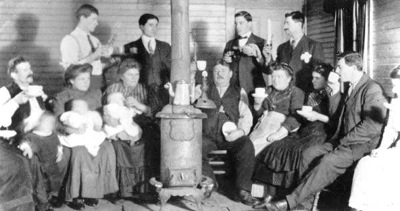Little Italy: Here v. There
From Decoding New York
| Introduction |
| Little Italy |
| * Evolution |
| * Here v. There |
| * Economy |
| * What's Real |
| Koreatown |
| * Evolution |
| * Here v. There |
| * Economy |
| * What's Real |
| Comparison |
| * Photo Gallery |
| * Sources
|
Little Italy first began to appear in the late 1800s when factors such as poverty and unemployment forced Italians out of Italy. By 1921, the Italian population in New York City reached 391,000. The Italian immigrants divided themselves into region-specific areas based on where they originally came from. “The Northern Italians settled along Becker Street, while the Genoese claimed Baxter Street. Those from Western Sicily grouped themselves together along Elizabeth Street. Mulberry Street largely housed immigrants from Naples.”
Italian men worked in construction and on the docks while they lived with their families in Little Italy. There, other Italian immigrants would establish their own businesses to provide goods and services to their community. These ranged from shoe repair to selling food. Some sold from pushcarts in the street and when they accumulated enoguh capital, they rented small stores and made cheese, baked bread, or were butchers. They would become entrepreneurs, profiting from skills that personified Italian traditions. Many would turn to Italian culinary crafts and set up restaurants that exploited various italian cuisines. Others would set up shop to supply these businesses with authentic Italian imported goods. In this way, many Italian immigrants would make their living. As certain immigrants improved financially, these immigrants would move out of the cramped residential life of Little Italy. Often immigrants would seek homes in the suburbs, where there was more space and living conditions were of better quality. In effect a common cycle was evident. Newer Italian immigrants would venture into Little Italy to obtain jobs and within Little Italy assimilate to American ways. Little Italy served as a transition point for immigrants seeking economic and social improvement. Italians would hire newer Italian immigrants, who would gradually pick up the English language as well as other skills that would allow for the new immigrant to branch out on his own.
There was a steady influx of Italian immigrants until the passing of an immigration quota law in 1924. This restricted the arrival of immigrants and as such the population of Little Italy gradually declined. As previously settled immigrants or their children (second or third generation) picked up and moved out of Little Italy, spaces opened up but because of restrictions, no new Italian immigrants would take their place. As a result, Little Italy began to shrink and now the area encompasses about four blocks. Most of what used to be Little Italy is now occupied by Chinatown, as new waves of Chinese immigrants expanded into Little Italy, taking up residence and opening up businesses of their own.
Fortunately, Little Italy will never completely disappear because a New York City zoning resolution protects it. This notes that “Little Italy contains a number of buildings of architectural and historical interest.” Select buildings have been qualified as having significant social and traditional aspects in the life of the community. Much of the Italian culture and history is maintained through these structures.
Italian and American cultures have assimilated over time and the difference now is almost invisible (pizza has become an American tradition). This is most noticeable in the disappearance of the Italian language among second and third generations. For some Italian immigrants, assimilation becomes truly apparent in the fact that they have lost all connection to Italy. Certain families no longer have relatives in Italy. As such, these families no longer have direct ties to Italy and the need to speak Italian is reduced. They have become fully integrated into Americans.
Whereas the Italians have assimilated to America by adapting the use of English into their businesses and lifestyles, there is no real assimilation between the cultures of the Italians and the Chinese. There isn't evidence of combined businesses targeting both Italians and the Chinese. For example, Little Italy does not contain a shop where there is evidence of Italian and Chinese advertisement signs. There are, however, neighboring shops. One shop would be Chinese and another Italian, which symbolizes that there isn't any tension between the two. In fact there is evidence of mixing as Italians have hired Chinese immigrants as employees and in some cases observance of the other's ethnic holidays. There is a marked difference between the two neighborhoods primarily because Little Italy is an old neighborhood that is still alive mostly because of its long history, while Chinatown is a relatively new dynamic neighborhood with a large influx of new Chinese immigrants. Even so, Little Italy is a thriving neighborhood that provides many people, especially tourists, with a pleasant taste of Italian culture.
Tourists also come to see places, such as Umberto's Clam House, where organized crime figures have been killed.Such people have been associated with the "Mafia," a criminal association that originated in Sicily and that became active in the United States. Many Italians find it disturbing that their ethnic group is associated with stereotypes about criminal activity. Nonetheless, the actual events that have taken place in Little Italy associated with a minority of Italian immigrants and urban folklore about them continue to attract tourist interest.

